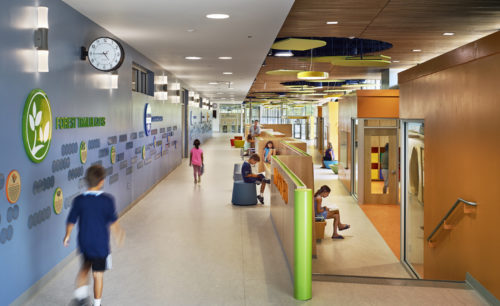Schools Resources
Here you can find resources for those interested in getting on the path to zero in schools. These resources include technical strategies, district approaches, state policies, and national programs that aim for getting to zero energy and zero carbon over time. Case studies highlight successful projects from across the country. Technical tools include assessment strategies for school retrofits and technical best practices in both new construction and existing buildings. You will also find policy guidance documents, examples of district goals, and strategies to achieve them.
Affordable Zero Energy K-12 Schools: The Cost Barrier Illusion
Decarbonization Roadmap Guide For School Building Decision Makers
The Financial Case for Net-Zero Energy Schools
Zero Net Energy Pilot for Local Educational Agencies and Community Colleges
Plowing through the Cost Barrier: Zero Energy K-12 Schools for Less
Zero Energy Schools Toolkit
DC Department of General Services RFP: Architectural/Engineering Services for West Elementary School
NCEF School Buildings Assessment Methods
Investing in our Future: How School Modernization Impacts Indoor Environmental Quality and Occupants
Measuring Up: Using Pre- and Post-Occupancy Evaluation to Assess High-Performance School Design
100% Clean Energy School Districts Handbook
A Guide to Zero Energy and Zero Energy Ready K-12 Schools
Green Ribbon Schools
NEEP High Performance Schools
2019 Schools Watchlist
Virginia Law Article 3: Public School Building and Facilities Modernization Standards
Understanding the Feasibility of Getting to Zero in School Retrofits
Getting to Zero Energy in Schools is Achievable! Stories from Schools on the Path to Zero
Financing Approaches for Getting to Zero Schools
San Francisco Unified School District Carbon Reduction Plan
San Francisco Unified School District Project Requirements
California Prop 39 ZNE Pilot Program
Prop 39: Improving Educational Outcomes and Energy Performance in California
USGBC Arc
Energy Star Portfolio Manager
Benchmarking
Discovery Elementary Zero Energy School

San Francisco Unified School District Carbon Neutral Resolution
The California Clean Energy Jobs Act Proposition 39 K–12 Program:
Commission has approved more than 1,200 energy expenditure plans for more than 1,100 local educational agencies, representing $881 million in funding and benefitting more than 4,400 school sites.
Montana SMART Schools Program
Zero Energy Project Guide
California K-12 and Community College Zero Net Energy Retrofit Readiness Study
Better Buildings Initiative for K-12 School Districts
Advanced Energy Retrofit Guide for K-12 Schools
Cornell University 2013 Climate Action Plan Update & Roadmap 2014-2015



